The gate stands on the south-east offshoot of the Esquiline Hill, in what was once an elevated area, called ad Spem Veterem due to the presence in the vicinity of an ancient temple dedicated to Hope. Erected in 477 BC, the shrine has never been found, but it gave the area its toponym. From very remote times the Via Labicana and the Via Praenestina passed through here.
Exploiting the height of the area, many aqueducts were constructed over time to bring water into the city. Two aqueducts were built by the Emperors Caligula and Claudius between AD 38 and 52: aqua Claudia and Anio Novus. A large honorific arch with two archways was built on this occasion, using squared blocks (opus quadratum) of rusticated travertine. The archways, beneath which the two roads passed, are bordered by piers with rectangular windows framed by Corinthian semi-columns and topped by a tympanum. The attic storey of the arch consists of three bands traversed by the channels of the aqueducts and bearing inscriptions: the upper epigraph commemorates the construction of the work by Emperor Claudius, while the other two refer to later restorations by Vespasian in AD 71 and Titus in AD 81.
When the Aurelian Walls were built, the arches of the aqueducts were incorporated into the new circuit of walls, and the two monumental archways became a city gateway, remaining in use until the time of Pope Gregory XVI in 1838, when it was demolished. Its original appearance is only known to us thanks to old representations, including the celebrated ones of Giovanni Battista Piranesi and Giuseppe Vasi.
Flanking the structure were two towers; originally round, they were turned into a square shape at the beginning of the 5th century during renovation work carried out during the reign of Honorius. The 19th-century demolition brought to light the ancient tomb of Marcus Vergilius Eurysaces, incorporated within the construction of the round tower of Aurelian that stood in the centre of the two gateways. On the inner side of the city walls there was a postern used by the guards, also demolished in 1838; its foundations were discovered during excavations conducted between 1955 and 1957.
The two twin gateways were named after the roads passing through them, respectively Porta Labicana and Porta Praenestina, while the current name, Porta Maggiore (Porta Maior), attested from the 10th century, seems to derive from the nearby basilica of Santa Maria Maggiore.
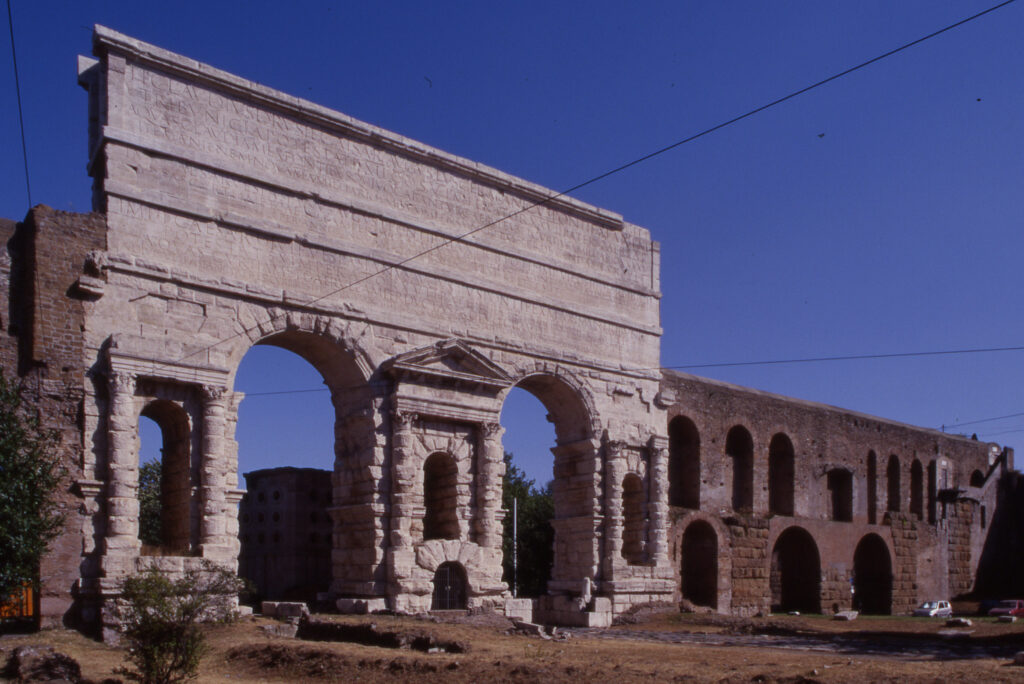
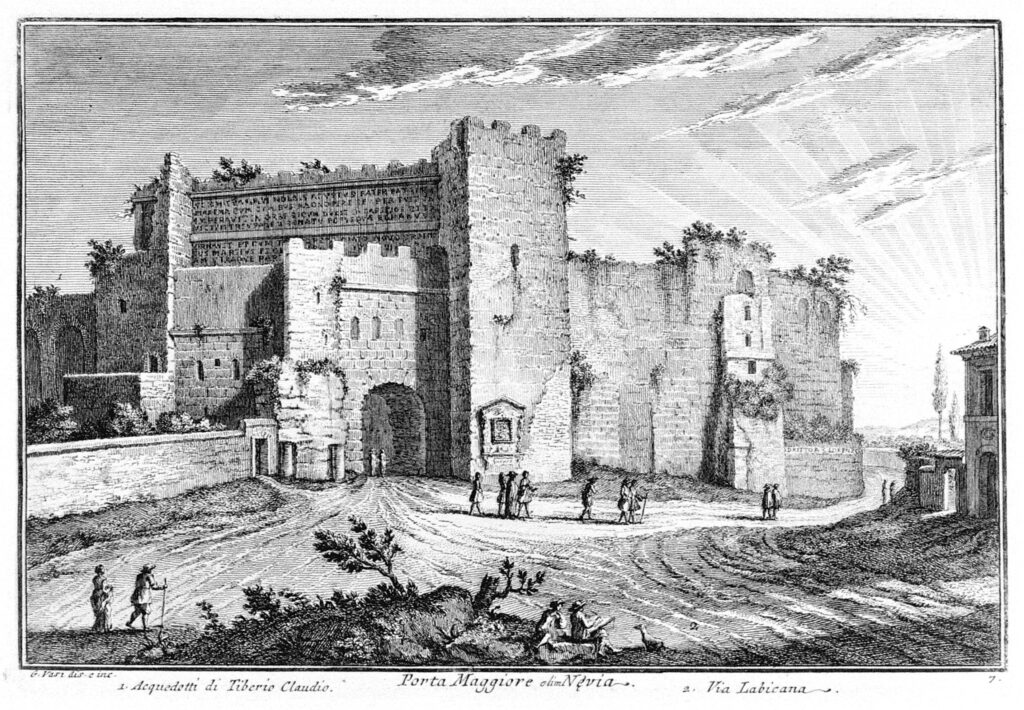
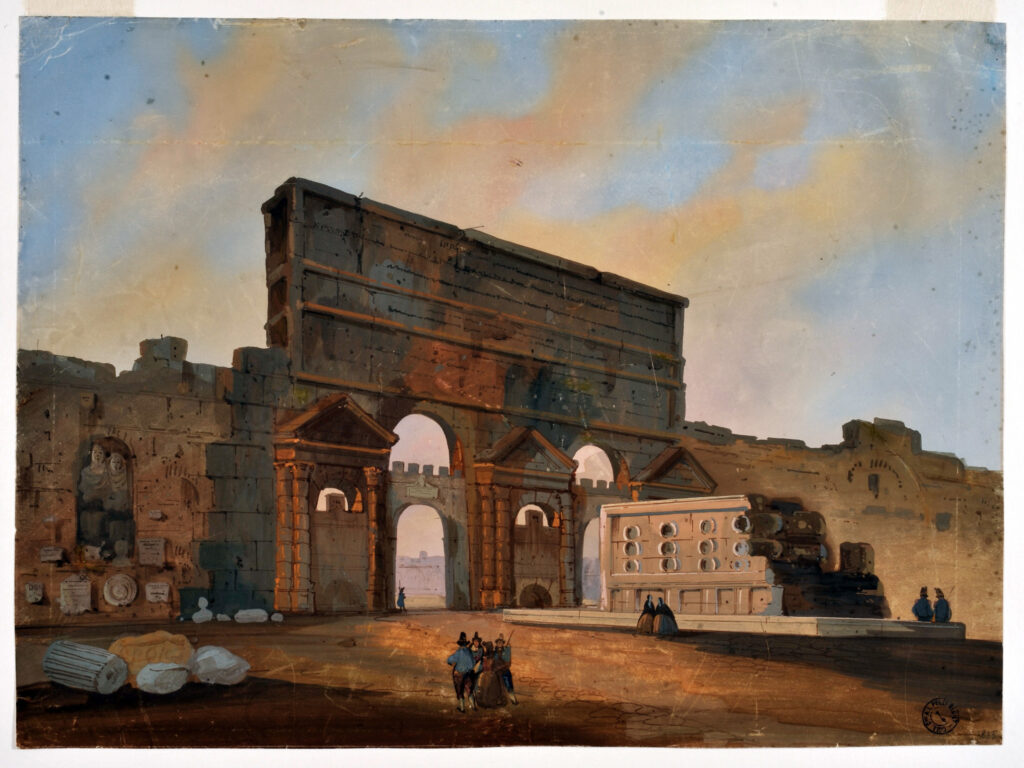
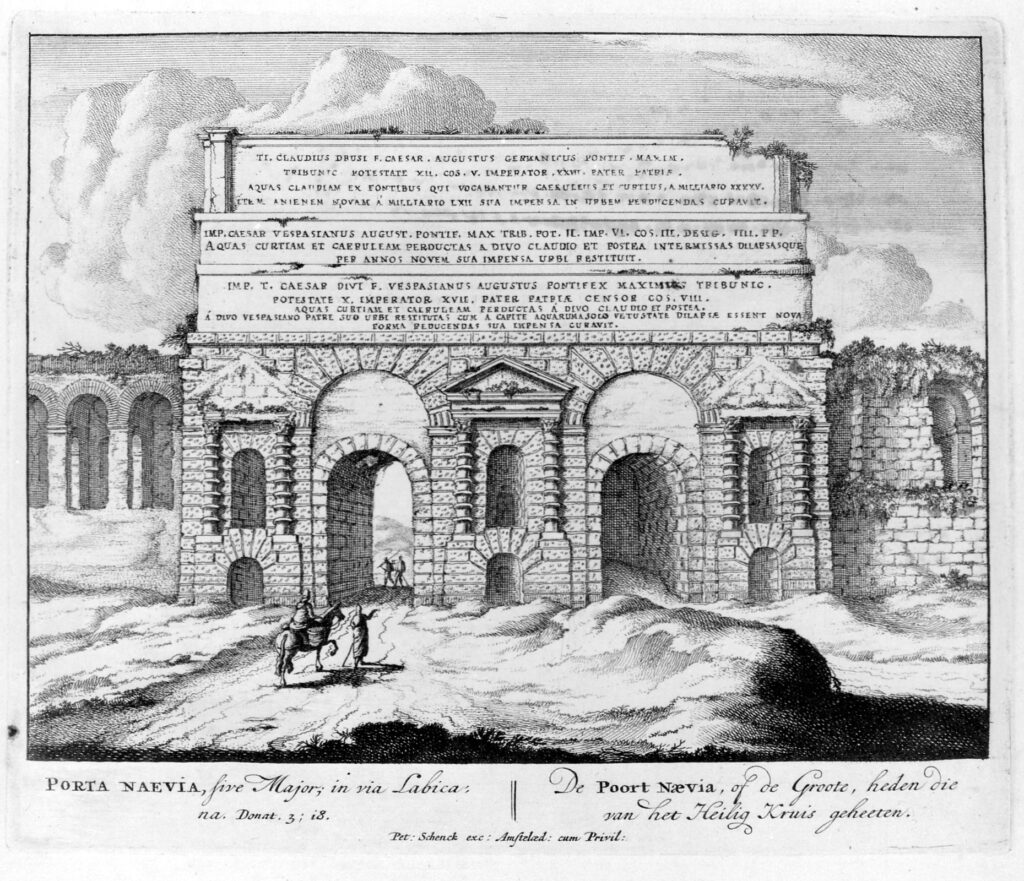
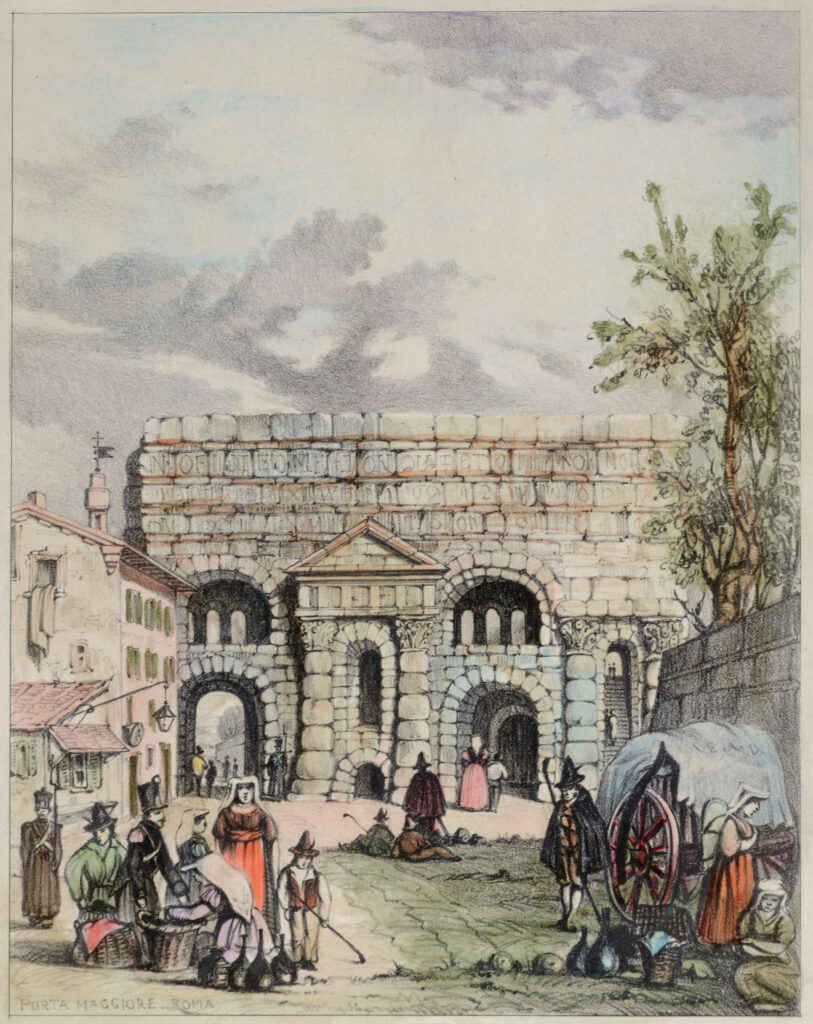
2. G. VASI, Porta Maggiore, last quarter of the 18th century, print.
3. View of Porta Maggiore, mid 19th century, watercolour.
4. P. SCHENK, View of Porta Maggiore, first quarter of the 18th century, etching.
5. DOLBY JOSHUA E. A., View of Porta Maggiore, second quarter of the 19th century, lithograph (Museo di Roma, Gabinetto delle Stampe – MR 6294) .


